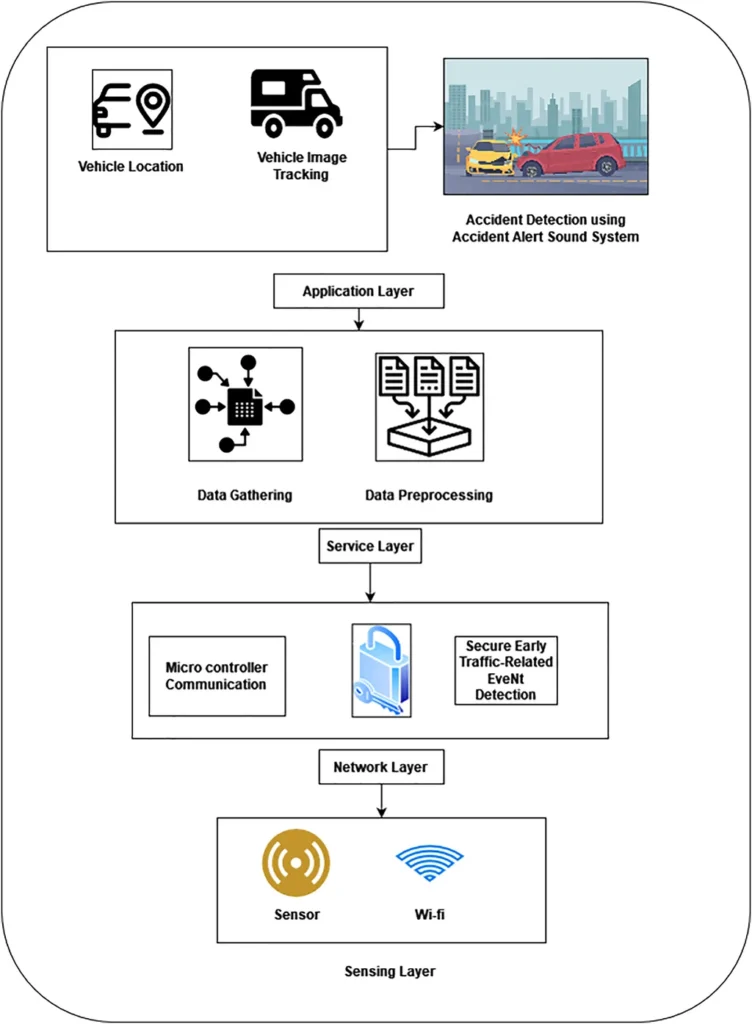In the ever-evolving landscape of intelligent transportation systems, a team of researchers from the Logistics Engineering College at Shanghai Maritime University has made a significant stride in vehicle detection technology. Led by HUA Jiabao, the team has developed an innovative framework that combines the power of Convolutional Neural Networks (CNN) and Transformer architecture to enhance the accuracy and efficiency of vehicle detection using roadside cameras. This breakthrough, published in the journal ‘Jisuanji gongcheng’ (translated to ‘Computer Engineering’), promises to bring substantial improvements to traffic management and maritime logistics.
The team’s approach addresses the complexities of traffic scenarios by introducing an adaptive spatial Transformer, which is integrated with ResNet50 to form a robust backbone network. This network is designed to handle diverse vehicle orientations and scales, a common challenge in real-world traffic conditions. The researchers also refined the Transformer’s input using position encodings based on angles and distances, ensuring optimal spatial information utilization. Additionally, a channel-space attention mechanism was incorporated to enhance the global contextual understanding of the images.
One of the standout features of this research is the eschewing of the autoregressive approach in the decoding phase, which allows for parallel decoding of multiple targets. This not only speeds up the detection process but also integrates target query embeddings for more accurate vehicle detection tasks.
The empirical evaluations of this framework on various datasets, including UA-DETRAC, IITM-hetra, and a proprietary dataset, yielded impressive mean Average Precision (mAP) scores of 96.42%, 87.82%, and 98.64% respectively. These results surpass benchmarked models across different scales, highlighting the effectiveness of the proposed method.
“The adaptive spatial Transformer and channel-space attention mechanism are pivotal in achieving superior performance,” said HUA Jiabao, the lead author of the study. “Our framework not only improves detection accuracy but also enhances the efficiency of vehicle detection, which is crucial for real-time traffic management.”
The commercial impacts of this research are substantial. Enhanced vehicle detection technology can lead to more efficient traffic management systems, reducing congestion and improving safety. For the maritime sector, this technology can be integrated into port operations to monitor vehicle movements, optimize logistics, and enhance security. The ability to accurately detect and track vehicles in real-time can streamline port operations, reduce delays, and improve overall efficiency.
Moreover, the framework’s adaptability to different vehicle orientations and scales makes it versatile for various applications, from urban traffic management to large-scale logistics operations. The researchers’ decision to eschew the autoregressive approach in favor of parallel decoding also opens up opportunities for real-time processing and decision-making, which is critical in dynamic environments like ports and shipping yards.
In the words of ZHANG Jingrui, another key member of the research team, “The integration of CNN and Transformer architecture provides a robust solution for vehicle detection. Our method’s superior performance across various datasets underscores its potential for real-world applications.”
As the maritime industry continues to embrace digital transformation, technologies like this vehicle detection framework can play a pivotal role in enhancing operational efficiency and safety. The research conducted by HUA Jiabao and his team at Shanghai Maritime University represents a significant step forward in this direction, offering promising opportunities for the maritime sector to leverage advanced detection technologies for improved logistics and traffic management.

